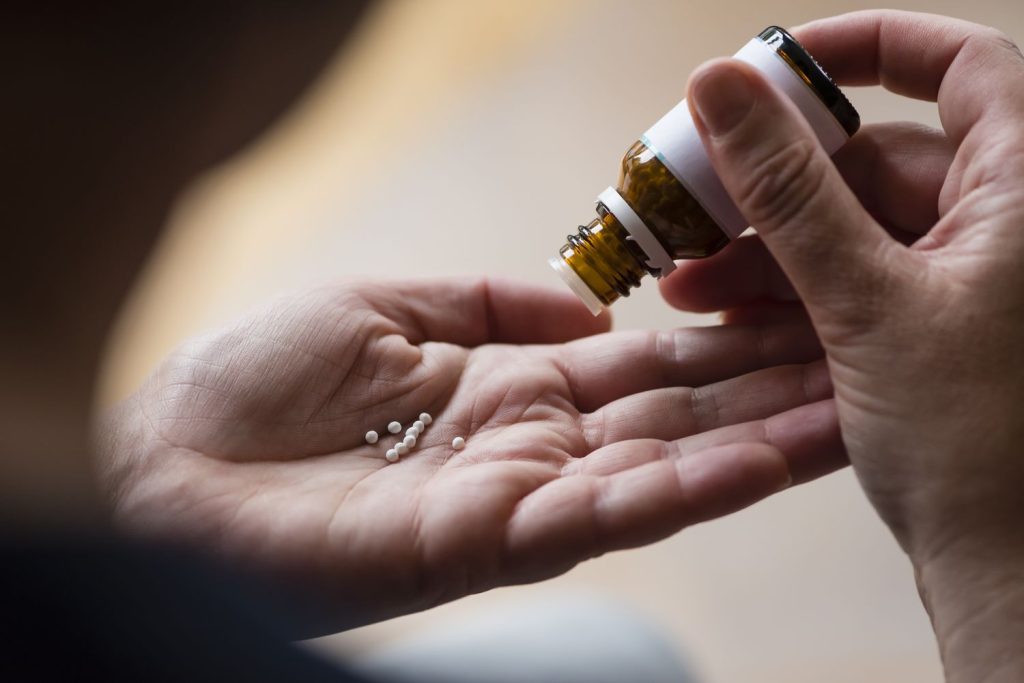Hormone pellets are a compounded hormone replacement therapy (HRT) taken to help treat hormonal imbalances and menopause symptoms. They are tiny implants placed under the skin by a healthcare provider and designed to release bioidentical hormones (artificial versions of hormones) slowly over time. Though this type of therapy has plenty of benefits, it also has some potential downsides.
Pros of Hormone Pellets
Bioidentical hormone pellet therapy may offer some benefits to those who use them. These benefits may include:
- Consistent hormone release: Hormones are consistently released into the bloodstream, and their effects can last three to six months.
- Convenience: For people who prefer not to take a daily pill, hormone pellets offer a convenient alternative because a healthcare provider implants them under the skin.
- May provide symptom relief: Hormone pellets may help alleviate menopause symptoms, including hot flashes, night sweats, and other symptoms.
- Can be personalized: Unlike prescription medications with fixed ingredient amounts, compounding pharmacies can mix, alter, or combine ingredients to create a product that suits the individual’s needs.
Cons of Hormone Pellets
Not FDA-Approved
To get the U.S. Food and Drug Administration (FDA) to approve a drug, the pharmaceutical company producing it must go through various phases of clinical trials to ensure the drug’s safety, effectiveness, and quality.
Hormone pellets are compounded, which means they are prepared by a pharmacist in a compounding pharmacy by mixing or altering ingredients. However, compounded drugs are not subject to the same strict regulatory guidelines FDA-approved prescription drugs are. This means the FDA has not verified or vetted their use before they go to market. As a result, there is an additional risk that products may vary in quality or pose safety concerns.
Requires Minor Surgery
Hormone pellets must be implanted under the skin by a healthcare provider, where they will slowly release hormones over time until they dissolve.
During your appointment, the healthcare professional will inject a local anesthetic to numb the area. When the area is numb, they will make a small incision and place the tiny pellets into fatty tissue under the skin. Then, they will cover the area with a dressing and apply compression for several minutes. After you go home, you must follow some aftercare instructions for applying ice and changing the dressing for a few days.
Though the procedure is relatively minor, it will be required every few months for continued treatment.
Potential for Side Effects and Risks
Compounded products, such as hormone pellets, are at risk for variations in quality and strength. This can result in unknowingly getting too much or too little of the hormones included. Due to these potential risks, the American College of Obstetricians and Gynecologists (ACOG) recommends FDA-approved hormone treatment over compounded hormones.
The North American Menopause Society emphasizes the following safety concerns about compounded hormones:
- Minimal regulation and monitoring
- The possibility of an overdose or not getting enough (due to variations in strength)
- Impurities in the medicine
- Lack of sterile compounding environment
- Lack of data on the safety and effectiveness
- Lack of a label to inform the patient of risks
Other concerns include:
- For bioidentical hormones, healthcare providers often rely on salivary and/or urine hormone testing to determine the dose, but this method is unreliable and, therefore, not recommended.
- Bioidentical hormones should not be used when FDA-approved drugs are available for the same purpose, except in certain situations, such as when the individual is allergic to an ingredient in the FDA-approved drug.
In 2020, the FDA published a report from the National Academies of Science, Engineering, and Medicine (NASEM). NASEM conducted a study on bioidentical compounded hormones and found a lack of high-quality evidence of safety and effectiveness from proper clinical trials. Much of the existing data came from low-quality data, such as patient and healthcare provider reports, rather than large, well-designed clinical trials.
Who Should Not Use Them?
You should not take hormone pellets or any type of hormonal replacement therapy if you have or have had any of the following conditions:
- Breast cancer
- Endometrial cancer
- Stroke
- Heart attack
- Blood clots
- Liver disease
- Pregnancy or possible pregnancy
Always consult your healthcare provider for advice on the best treatment for your condition.
Alternative Therapies
There are various alternatives to hormone pellets, including both hormonal and nonhormonal treatments.
The best alternative for you depends on your medical history and specific health needs. For instance, if you have a history of blood clots, you cannot take hormone pellets or any other form of hormone replacement therapy.
For those seeking an FDA-approved alternative to hormone pellets, there are several options, including estrogen pills, patches, gels, and sprays, as well as vaginal estrogen products, which are suitable for people whose primary symptom is vaginal dryness.
If you still have a uterus, you will also need progestin therapy, which helps lower the risk of uterine cancer that can occur when taking estrogen alone. The combination of estrogen and progestin is called combined hormone therapy.
For those who cannot take hormones, there are other options to consider under the guidance of your healthcare provider, such as:
- OTC vaginal moisturizers for vaginal dryness
- Antidepressants for hot flashes
- Selective estrogen receptor modulators (SERMs) for hot flashes or pain during intercourse
- Veozah (fezolinetant), a hormone-free treatment that helps with hot flashes and became FDA-approved in 2023
A Word From Verywell
Hormone pellet therapy is typically considered by people experiencing menopause and its associated symptoms. It may offer relief from symptoms such as mood swings, vaginal dryness, hot flashes, and night sweats.
:max_bytes(150000):strip_icc()/MaryChoyPharmD-46ee98a7f5c04e89a46e7857085ac44c.png)
Summary
Hormone pellets for menopause are made by compounding pharmacies and may help alleviate symptoms such as hot flashes and night sweats. However, there are negative side effects of hormone pellets to consider, such as the fact that they are not FDA-approved and require a minor procedure for insertion. Consult a healthcare provider to determine your best treatment options.
:max_bytes(150000):strip_icc()/IMG_9695-8b4dc875a72440b48ade68c160fc970b-0f69e10a6856432c81f7663e477daebd.jpg)
By Karen Berger, PharmD
Karen Berger, PharmD, is a community pharmacist and medical writer/reviewer.
Thanks for your feedback!
What is your feedback?







